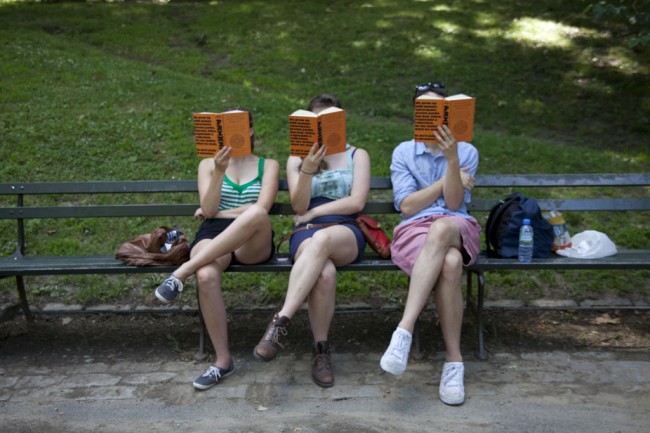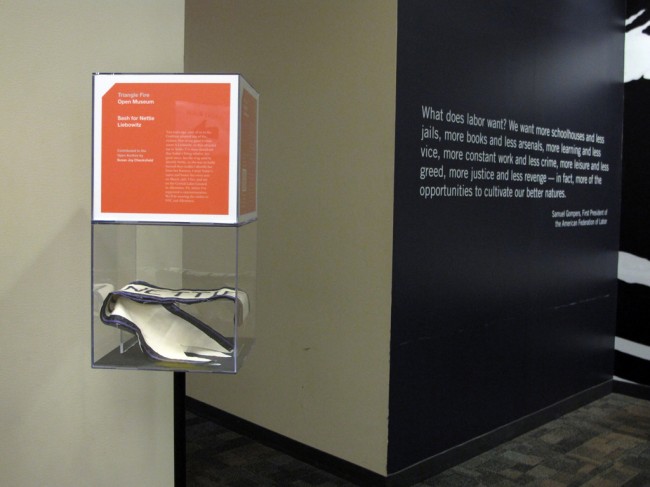
We are celebrating 15 years — and counting — of stories that are deeply researched and deeply felt, that build a historical record of what the city has been.
We are celebrating 15 years — and counting — of stories that are deeply researched and deeply felt, that build a historical record of what the city has been.
To mark the fifth anniversary of the launch of Urban Omnibus, we look at themes that have emerged in our content over time and think about what those threads reveal about the needs, desires, and priorities of the city today.
The physical city and its lived experience exist together in a reciprocal relationship: neighborhood character evolves as both built form and the local community change; a specific park bench, passed by without notice by many, might hold great significance to a couple who happened to meet there; a tragedy that destroys buildings as well as lives demands new structures and spaces that allow us to remember while we reshape and rebuild. In the first in a series of Forum posts that identify themes that have arisen within content published in Urban Omnibus’ first five years, today we look at Meaning and Memory.
For the particularly religious, great significance rests in one’s relationship to the divine, one’s practice, and the community that often arises among common followers of a faith. More often than not, this occurs within a specific space — but that space need not be a cathedral, temple, synagogue, or mosque. In her analysis of religious practice in the immigrant populations in New York City, Matilde Cassani came across an extraordinary variety of “Sacred Spaces in Profane Buildings,” including a former Gucci storefront and an old brick apartment building. Such retrofitting of spaces into sites of worship not only demands interesting architectural improvisations; it also speaks to a contemporary urban reality of displacement and adaptation.
In her many years as a documentarian and journalist of New York, Constance Rosenblum has focused on another notably important space for individuals: their homes. While much of the city may appear gratuitously public, Rosenblum visits some of the many spaces hidden from view. In “City of Stories,” she reveals the value of the individual story in creating a larger narrative of New York City and discusses her own rather storied career bringing them to the world.
In the winning submission of our first essay competition, “Transgressing the Grid: Adventures On (and Off) Manhattan Island,” Phillip Kay recounts a personal history of acting within and moving against the logic of Manhattan’s street grid, one interpretation of New York City among infinite others. Kay illustrates how an “anomaly in the urban system,” whether a little known passageway through a Midtown skyscraper or the freeing adjacency of navigable water, serve as concrete markers of experience in the personal and collective memory of the city.

A small, beautiful moment in the Odyssey Works performance “The Map Is Not the Territory” in which the one audience members passed three people reading a book he made. | Photo by Ayden L.M. Grout
Experiences with the ability to embed the city’s spaces with meaning is the medium of choice for the performance collective Odyssey Works, which creates one-time immersive experiential performances for an audience of one person. In “The City for an Audience of One,” Odyssey Works co-founder Abraham Burickson discusses how his group uses sites of personal significance, sites of particular public imagination, and performance geared toward the audience to “make the spaces of the city more luminous.”
Ephemerality is also central to an unconventional memorial to the Triangle Factory Fire, one of the city’s great tragedies and an event with outsize influence on contemporary safety requirements and workers’ legal protections. Eschewing the permanence of a traditional memorial, the Triangle Fire Open Museum installs objects and photographs from its Open Archive throughout the city, integrating a dialogue with the objects into the daily experience of unknowing museum-goers and creating moments of reflection within the flow of other activities.

An object from the Triangle Fire Open Archive — a sash for Nettie Liebowitz— installed at CUNY’s Murphy Institute | Photo courtesy of Gabrielle Bendiner-Viani
As with the Triangle Factory Fire, disaster is often a catalyst for consideration of what was and what should be. In “Lessons from Rockaway: What to Save from the Flood,” Yael Friedman tells the story of the people, community, and culture of the peninsula her family calls home. In the context of post-Sandy and post-9/11 press coverage that, according to Friedman, generally puts forth a simplistic or inaccurate narrative of peninsula, she urges us to consider “what kind of life exactly would be retreating” if some plans for the areas future were realized.
The memory of a neighborhood, like Friedman’s of Rockaway, is long in a city like New York, but that memory also competes with itself. As Nancy Biberman, the founder and president of community development organization WHEDco, notes, the history of the Bronx does not start with the dark days of the 1970s. In her work meeting the needs of local residents in the South Bronx — whether that’s through constructing affordable housing, attracting retailers to empty storefronts, or providing access to health services — Biberman sees a role for reminding residents of the rich cultural history, replete with musical fusions and tight-knit communities, of their neighborhood.
The views expressed here are those of the authors only and do not reflect the position of The Architectural League of New York.